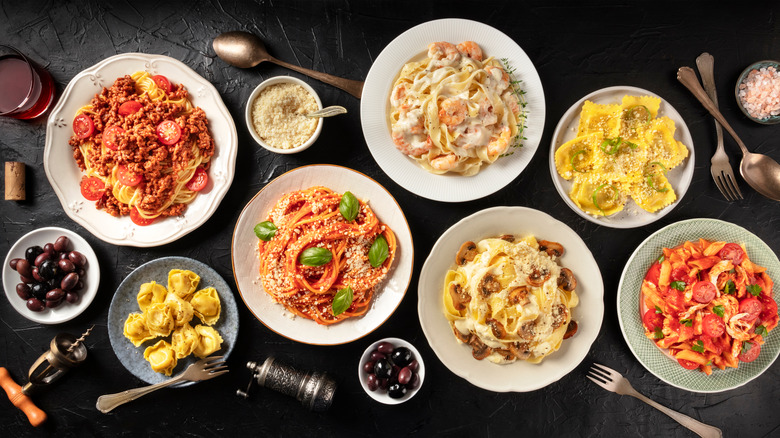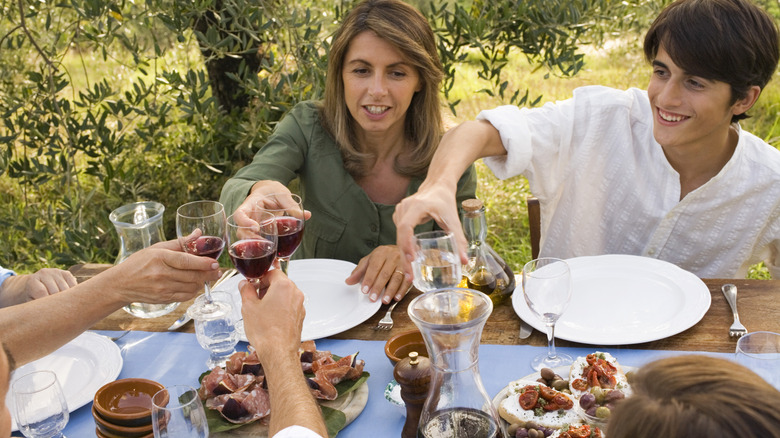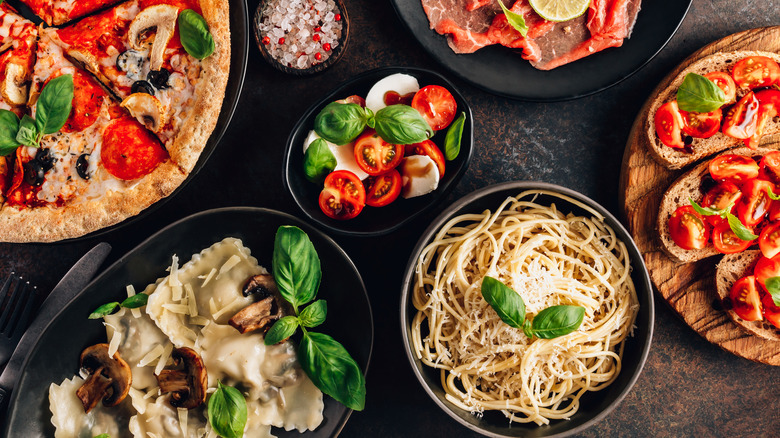One Dinner Plate Is Never Enough In Italy
After preparing a gorgeous Italian feast, you may be tempted to stack a plate to the brim with pasta, garlic bread, and salad. But, if you want the true Italian dining experience, you'll need to neglect this instinct. Italian meals are served as multi-plate courses that extend over a couple of hours or more. If you really want to wow guests at your next dinner party — or you're just tired of watching your family wolf down dinner before they return to their own evening plans — abandon the American standard of proteins, starches, and vegetables eaten simultaneously.
Instead, learn how to serve dinner as the Italians do and make this communal gathering your evening's main event. Even if you're not ready to make a full, Italian-style menu on a weekday, you may still want to try the standard Italian practice of serving dinner over several smaller plates, rather than one big dish.
The cultural differences behind an Italian meal
There are a few major differences between American and Italian dinners, but perhaps the most major is how long the meal lasts. America prioritizes optimized eating — once the food is plated on a single dish, we rush toward the finish line so we can carry on with other evening activities. In Italy, dinner is their primary evening activity. In direct contrast to Americans, the Italians' motto is "stare a tavolo" or "stay at the table." Courses are brought out only as the previous one is completely finished, which naturally lengthens the time you spend at the table.
Americans tend to eat at around 6 or 7 p.m. — basically within an hour or two of the standard 9 a.m. to 5 p.m. workday. Italian dinners come considerably later in the day, around 8 p.m. to 10 p.m. Again, this is because dinner is not seen as a means to an end, but rather as the main activity. Each course is presented separately to maximize pleasure and enjoyment. A later start time allows more time for the food to be carefully prepared and for friends and family to gather and enjoy each other's company without feeling rushed.
What does an Italian dinner menu look like?
A formal celebratory Italian dinner can contain as many as eight courses but that is typically reserved for special occasions. The main slate of Italian dinner courses includes a starter, called antipasti, the first course (primi), a meat or fish course known as secondi, the salad or insalata course, and the dolce, which means dessert! Other optional courses like the apertivo, digestivo, contorni (sides), and a cheese course known as formaggi e frutta, can be added for extra indulgence.
Bruschetta, charcuterie, cheese, and bread are all great choices for antipasti. The primi is a course where starches shine — think gnocchi, risotto, pasta, and so on. Secondi is a protein-focused course that will always have a "meaty" option like fish, beef, pork, or lamb. Interestingly, Americans tend to serve salad as a first course, but in Italy, insalata comes just before dessert. At the end of the meal, it's time to indulge your "dolce" tooth with dessert. Panna cotta, tiramisu, or gelato are all examples of typical Italian dessert offerings. A strong shot of espresso often accompanies or immediately follows the dessert course.


